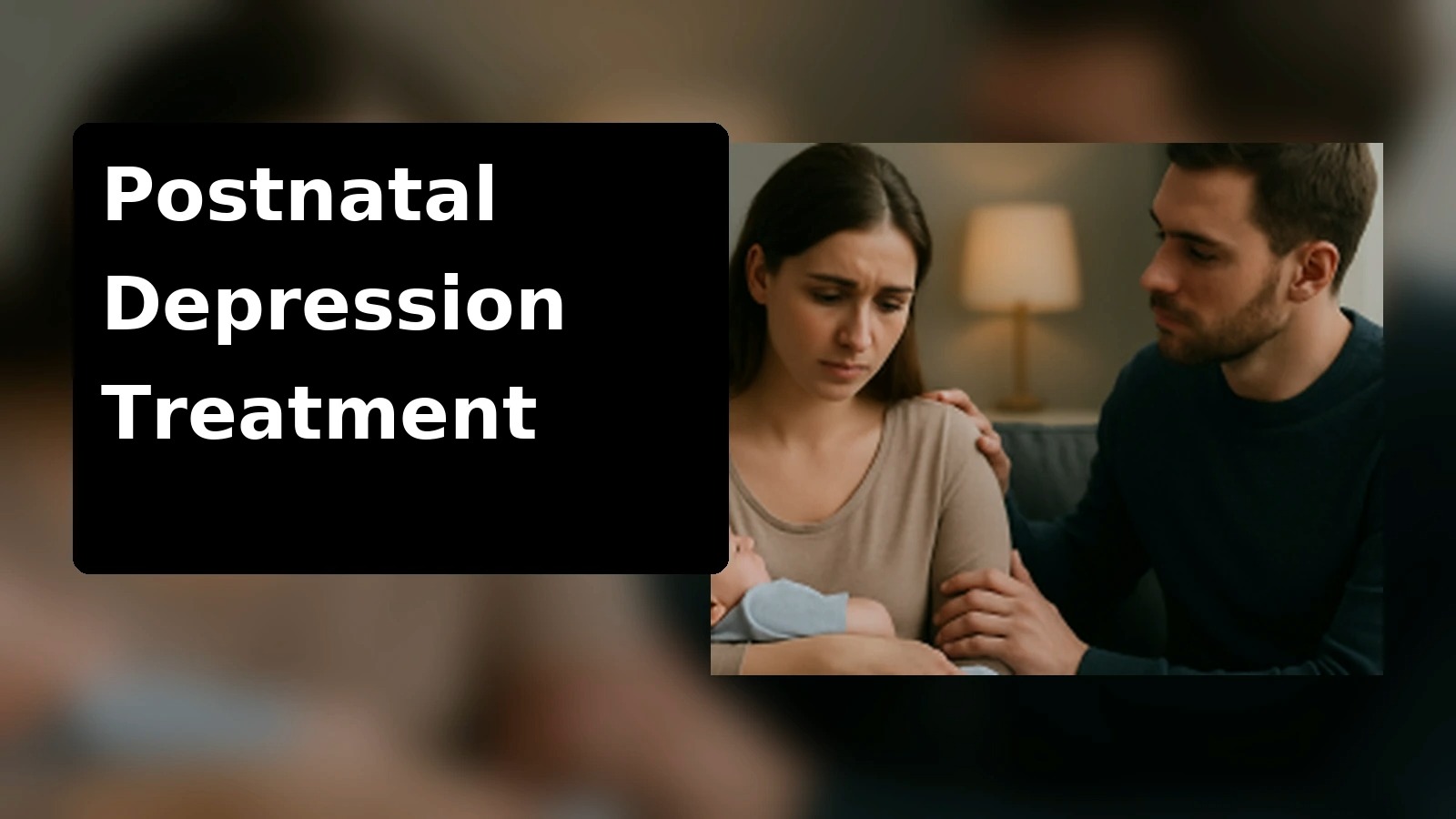Postnatal depression (PND)—often called postpartum depression (PPD)—is common and treatable. Most people recover with a plan that may include talk therapy, medication when needed, and strong social support. If you ever have thoughts of self-harm or harming your baby, seek emergency care immediately.
What is postnatal depression?
Postnatal depression is a medical mood disorder that can start during pregnancy or anytime in the first year after birth. It is different from short-lived “baby blues.” PND can affect birthing mothers, partners, and adoptive parents. It’s not your fault—and help works.
How clinicians confirm it (and why that matters)
Most care teams use brief, validated screening tools—such as the Edinburgh Postnatal Depression Scale (EPDS) or PHQ-9—followed by a clinical assessment. This helps match you with the right treatment at the right time and rules out medical contributors like thyroid problems, iron deficiency, sleep disorders, or substance use.
Best treatments for postnatal depression
1) Talk therapy (first-line for many)
- Cognitive Behavioral Therapy (CBT): builds practical skills to change unhelpful thought patterns and habits.
- Interpersonal Therapy (IPT): focuses on relationships, role changes, grief, and communication after birth.
- Formats: one-to-one, couples, group, or secure telehealth.
Why it helps: Many people notice improvements within 4–8 sessions; benefits tend to last.
2) Medication (when symptoms are moderate to severe, or therapy alone isn’t enough)
A clinician may recommend antidepressants (often an SSRI or SNRI). Choices are individualized—considering your past response, side-effects, other medicines, and breastfeeding plans. Several options have reassuring data in lactation; your prescriber will discuss benefits and risks for you and your baby.
PPD-specific options may be considered in some countries:
- Brexanolone (IV, monitored in clinic/hospital) — fast-acting for some, requires supervision for sedation.
- Zuranolone (oral, time-limited course) — may work quickly for some; safety counseling is required.
Safety note: never start/stop or mix medications without medical advice. Report side-effects promptly.
3) Social support & practical help
Isolation makes depression worse. Build a small, reliable support circle:
- Peer support groups (local or virtual) and community programs
- Home-visiting or doula services if available
- Lactation support for feeding challenges
- Share night duties when possible; ask for help with meals, errands, and childcare
4) Address contributing health factors
An effective plan checks for and treats:
- Thyroid dysfunction, iron deficiency, sleep apnea/insomnia
- Ongoing pain, traumatic birth experiences, or anxiety disorders
- Substance use concerns
Self-care that actually supports treatment
These steps are add-ons, not replacements for clinical care:
- Protect sleep: aim for one 3–5-hour block; accept nighttime help when offered.
- Nourish regularly: small, protein-rich meals; keep a water bottle nearby.
- Gentle movement: short walks or stretching (as cleared by your clinician).
- Mindfulness minutes: simple breathing or grounding exercises daily.
- Reduce overload: limit doom-scrolling; unfollow accounts that intensify pressure or comparison.
- Realistic routines: small wins beat perfect plans.
Step-by-step: Getting treatment started
- Tell a clinician (OB-GYN, midwife, GP, pediatrician, or mental-health professional).
- Ask for a screening (EPDS/PHQ-9) and discuss next steps.
- Choose a plan together—therapy, medication, or both.
- Book follow-ups (often 2–4 weeks at first) to adjust the plan.
- Add support: partner/family help, peer group, lactation consult if needed.
- Create a safety plan—who to call if symptoms worsen or sleep collapses.
Recovery timeline & relapse prevention
Many people feel better within 2–6 weeks of consistent treatment; others need several months. Keep appointments even when you start to improve. For future pregnancies, share your history early—proactive therapy and sometimes preventive medication can reduce the chance of recurrence.
Postnatal psychosis (rare, but an emergency)
If someone develops confusion, hallucinations, delusions, extreme agitation, or severe insomnia—usually within the first two weeks postpartum—call emergency services immediately. Rapid, specialized care is essential and recovery is possible.
For partners, family & friends
- Notice changes and ask with compassion: “How can I make today easier?”
- Offer practical help: nights, meals, laundry, rides to appointments.
- Encourage treatment and go along if asked.
- Partners can experience depression too—you deserve care as well.
Frequently asked questions
Is “postnatal” the same as “postpartum”?
Yes. “Postnatal depression” and “postpartum depression” describe the same condition. “Perinatal depression” includes pregnancy and the postpartum period.
Can I get treatment if I’m breastfeeding?
Often yes. Many therapies and several antidepressants are considered compatible with breastfeeding. Your clinician will tailor choices to you and your baby.
What if I had PND before?
Tell your care team during pregnancy. An early plan—screening, therapy, extra sleep support, and sometimes preventive medication—can lower risk.
Are vitamins or herbal remedies enough?
Nutritional support may help overall wellbeing, but supplements and herbs are not substitutes for evidence-based treatment. Discuss anything you’re taking with your clinician.
How do I find a therapist near me?
Search for “postpartum depression therapist” or “perinatal mental health therapist,” check local hospital/clinic directories, or contact a national postpartum support organization for referrals.
Disclaimer: This article is for general education and does not replace professional medical advice, diagnosis, or treatment. Always consult a qualified clinician about your own situation.


Leave a Comment